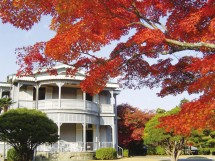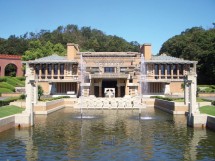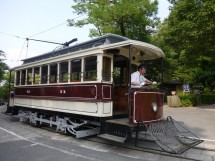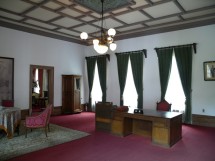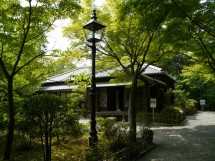Open air museum – theme park MEIJI MURA
The MEIJI era is the time when modern Japan was shaped by opening the door to the world and introducing western culture, so that is recognized as a very important part of Japanese history along with the ASUKA and NARA eras.
Because of these facts, the MEIJI era constructions are based on traditional techniques and knowhow inherited from EDO era and at the same time, they include newly introduced things from the west. Bricks and stones began to be used in construction designed in western styles and as the Industrial Revolution proceeds, more new materials like steel, cement and glass came in. Thus modern Japanese construction style was established through this era.
Many of these constructions, which are valuable both in historical and artistic aspects, were lost in disasters, wars, and particularly through rapid industrial developments after World War II.
But two men with great enthusiasm, the late Dr. Yoshiro TANIGUCHI (the first director of MEIJI MURA) and
Mr. Moto-o TSUCHIKAWA (schoolmate of Dr. TANICUCHI in the former fourth national high school and then vice president of Nagoya Railroad Company.) cooperated and eventually established the MEIJI MURA museum complex from 1962 with the support of many people.
MEIJI MURA was finally opened on March 15, 1965 at the side of IRUKA Lake, which has great nature continued since ancient days. There were a telephone exchange moved from HOKKAIDO, St. John’s Church from KYOTO, a steam locomotive and only 15 buildings at the time but now MEIJI MURA has 67 buildings and a site of one million square meters (approx. 110 million square yards).
Dr. TANIGUCHI and Mr. TSUCHIOKA saved especially valuable buildings from being destroyed by bringing them to MEIJI MURA and restored them to their original shape. They were brought not only from Japan but from around the world, as far as Hawaii, Brazil, and Seattle. Ten of these buildings were designated as important cultural assets. The buildings are arranged to show the heritage of MEIJI culture.
Also gardens, walks and trees are carefully maintained to keep the village environment.
Every building displays furniture and other related items inside, and house temporary exhibitions of historic items. Railroads have been laid in the village, with the first Meiji train and steam locomotives now operating. The UJI YAMADA Post Office offers real mail service.
MEIJI Mura offers the tourist a special place of social education and recreation by collecting, preserving, and maintaining valuable buildings and historical materials. Visitors can touch the form and spirit of the MEIJI era, see the evidence of EAST – WEST cultural exchange and enhance mutual understanding between the people of Japan and other countries of the world.

